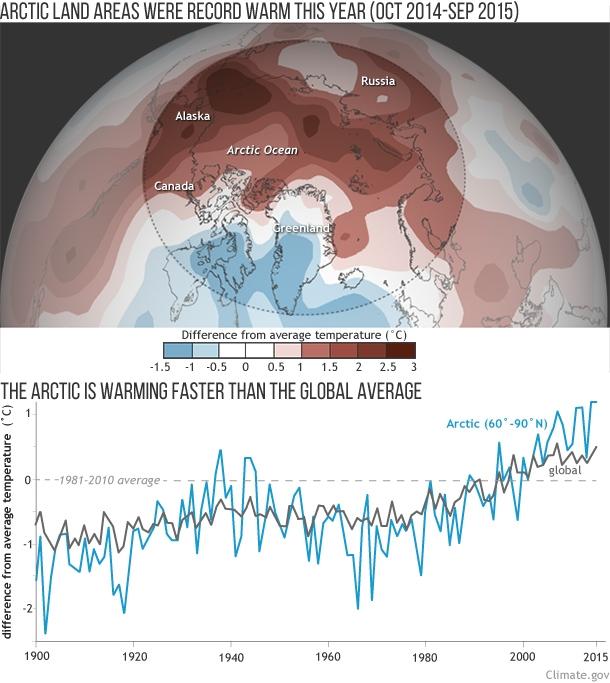Temperatures in the Arctic region have reached the highest scientists have ever seen.
The revelation was outlined in the National Oceanic and Atmospheric Administration’s Arctic Report Card.
The scientists say that the average annual surface air temperature anomaly over land north of 60 degrees north was +1.3 Celsuis (+24.24 Fahrenheit), the highest in the observational record.
That record began in 1900.
The temperature difference represents a 2.9 Celsius (37.2 Fahrenheit) degree increase since the beginning of the 20th century.

NOAA





